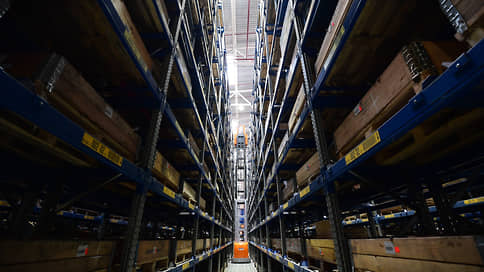Logoparks went from hand to hand – Newspaper Kommersant No. 49 (7494) dated 03/23/2023
[ad_1]

In the warehouse real estate segment, the largest transaction since the beginning of this year for the lease of space in an existing facility has been closed. We are talking about 32 thousand square meters. m, rented by a distributor of electrical equipment in the South Gates logo park in Domodedovo near Moscow. Market participants do not expect transactions of this size in the near future due to the shortage of large areas. Although the demand for such facilities, primarily from Russian companies, began to recover.
The Russkiy Svet company, which calls itself a major supplier of cable and wire products, electrical equipment and lighting equipment in Russia, has rented 32,000 sq. m. m in the South Gate logopark in Domodedovo near Moscow, owned by the Radius Group. The parties to the transaction and its consultant NF Group told Kommersant about this.
The level of rental rates in the “South Gate” is 6 thousand rubles. per sq. m per year, knows the head of the department of warehouse and industrial real estate Commonwealth Partnership Egor Dorofeev.
Thus, the annual payments of “Russian Light” will be about 192 million rubles.
So far, this is the largest transaction in the current year in the warehouse segment, says Igor Krotenkov, director of work with warehouse and industrial premises at IBC Real Estate. Deals with a large amount of space, and even more so in existing facilities, have always been a rarity due to consistently small vacancies, but last year they happened more often due to the release of space by foreign tenants, notes partner Ricci | Consulting and evaluation” Yana Kuzina.
However, now the potential for closing deals similar in size to the South Gate is almost exhausted, according to market participants interviewed by Kommersant. The reason is the shortage of large free lots in the market. According to Igor Krotenkov, there are no more than five objects left in the Moscow region, where you can rent from 20 thousand to 60 thousand square meters. m. According to Ricci, the share of free space in objects from 20 thousand square meters. m minimum – only 0.1%.
Kirill Purtovex-head of the Department of Economic Policy and Development of Moscow, in May 2022:
“About 15% of the commercial real estate objects under construction in Moscow are warehouses.”
In general, the share of vacant space in the warehouse market now does not exceed 2%, which indicates a recovery in demand, which decreased last year due to the withdrawal of a number of large Western manufacturers, retailers and distributors from the Russian market, says Konstantin, Director of the Industrial and Warehouse Real Estate Department of NF Group Fomichenko. Moreover, adds Anton Alyabyev, head of the CORE.XP warehouse and industrial real estate department, there is already a shortage of space. Against this background, tenants will have to return to build-to-suit deals (construction of an object for a specific customer), which were actively concluded until 2022, Igor Krotenkov believes. This year, Ozon has already ordered the construction of a warehouse for 130,000 sq. m. m in New Moscow.
In the first quarter of this year, the demand for logoparks is provided by Russian companies, says Victor Afanasenko, director of the warehouse real estate department at Nikoliers. According to his calculations, the volume of space purchased and leased by local companies since the beginning of this year has reached 252 thousand square meters. m, which is already 28% higher than the results of January-March 2022. As Alexandra Shakola, Director of Leasing and Marketing of Radius Group, notes, at the beginning of 2022 tenants from Russian companies accounted for 30% of tenants from the South Gates, now it is half.
Decreased interest in logoparks from foreign businesses is typical for the segment as a whole. In 2021, the share of demand from foreign companies in the logo parks of Moscow and the Moscow region was 17.1%, and in 2022 the figure fell to 6.5%, according to Nikoliers. At the same time, according to Yegor Dorofeev, Asian companies have already begun to enter the market, but the areas they occupy are far from the needs that large Western businesses once had.
[ad_2]
Source link





